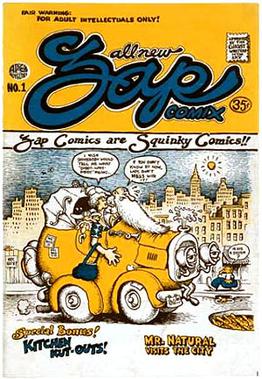
Underground comix are small press or self-published comic books that are often socially relevant or satirical in nature. They differ from mainstream comics in depicting content forbidden to mainstream publications by the Comics Code Authority, including explicit drug use, sexuality, and violence. They were most popular in the United States in the late 1960s and 1970s, and in the United Kingdom in the 1970s.

Kim Deitch is an American cartoonist who was an important figure in the underground comix movement of the 1960s, remaining active in the decades that followed with a variety of books and comics, sometimes using the pseudonym Fowlton Means.
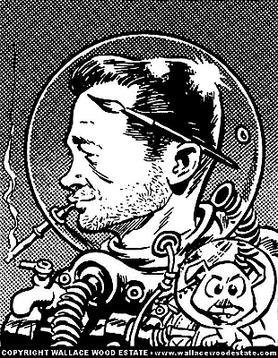
Wallace Allan Wood was an American comic book writer, artist and independent publisher, widely known for his work on EC Comics's titles such as Weird Science, Weird Fantasy, and MAD Magazine from its inception in 1952 until 1964, as well as for T.H.U.N.D.E.R. Agents, and work for Warren Publishing's Creepy. He drew a few early issues of Marvel's Daredevil and established the title character's distinctive red costume. Wood created and owned the long-running characters Sally Forth and Cannon.
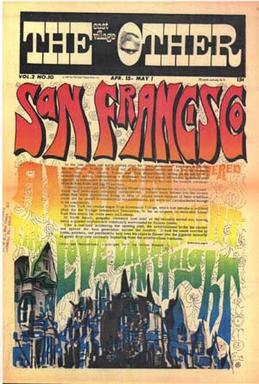
The East Village Other was an American underground newspaper in New York City, issued biweekly during the 1960s. It was described by The New York Times as "a New York newspaper so countercultural that it made The Village Voice look like a church circular".
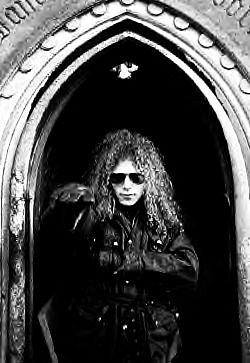
Vaughn Bodē was an American underground cartoonist and illustrator known for his character Cheech Wizard and his artwork depicting voluptuous women. A contemporary of Ralph Bakshi, Bodē has been credited as an influence on Bakshi's animated films Wizards and The Lord of the Rings. Bodē has a huge following among graffiti artists, with his characters remaining a popular subject.

Trina Robbins was an American cartoonist. She was an early participant in the underground comix movement, and one of the first women in the movement. She co-produced the 1970 underground comic It Ain't Me, Babe, which was the first comic book entirely created by women. She co-founded the Wimmen's Comix collective, wrote for Wonder Woman, and produced adaptations of Dope and The Silver Metal Lover. She was inducted into the Will Eisner Hall of Fame in 2013 and received Eisner Awards in 2017 and 2021.
George Metzger is an American cartoonist and animator. He was an underground comics artist during the mid-1960s and early 1970s in California, eventually relocating to Canada, where he worked in animation.
Robert Marion Stewart, known as Bhob Stewart was an American writer, editor, cartoonist, filmmaker, and active fan who contributed to a variety of publications over a span of five decades. His articles and reviews appeared in TV Guide, Publishers Weekly, and other publications, along with online contributions to Allmovie, the Collecting Channel, and other sites. In 1980, he became the regular film columnist for Heavy Metal.
Joseph Quarles Schenkman is an American publisher and underground cartoonist.
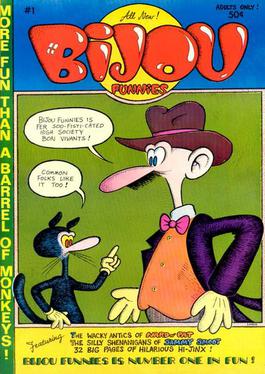
Bijou Funnies was an American underground comix magazine which published eight issues between 1968 and 1973. Edited by Chicago-based cartoonist Jay Lynch, Bijou Funnies featured strong work by the core group of Lynch, Skip Williamson, Robert Crumb, and Jay Kinney, as well as Art Spiegelman, Gilbert Shelton, Justin Green, and Kim Deitch. Bijou Funnies was heavily influenced by Mad magazine, and, along with Zap Comix, is considered one of the titles to launch the underground comix movement.
Roger Brand was an American cartoonist who created stories for both mainstream and underground comic books. His work showed a fascination with horror and eroticism, often combining the two.

Donald Richard Donahue was a comic book publisher, operating under the name Apex Novelties, one of the instigators of the underground comix movement in the 1960s.
Gary Edson Arlington was an American retailer, artist, editor, and publisher, who became a key figure in the underground comix movement of the 1960s and 1970s. As owner of one of America's first comic book stores, the San Francisco Comic Book Company, located in San Francisco's Mission District, Arlington's establishment became a focal point for the Bay Area's underground artists. He published comics under the name San Francisco Comic Book Company, as well as publishing and distributing comics under the name Eric Fromm. Cartoonist Robert Crumb has noted, "Gary made a cultural contribution in San Francisco in the late 1960s, through the '70s, '80s & '90s that was more significant than he realizes."
Larry S. Todd is an American illustrator and cartoonist, best known for Dr. Atomic and his other work in underground comix, often with a science fiction bent.
Leonard Rifas is an American cartoonist, critic, editor, and publisher associated with underground comix, comics journalism, left-wing politics, and the anti-nuclear movement. He is notable for his contributions to the form of minicomics as well as publishing Japanese manga in the United States. Rifas' publishing company, EduComics, operated most actively from 1976 to 1982.
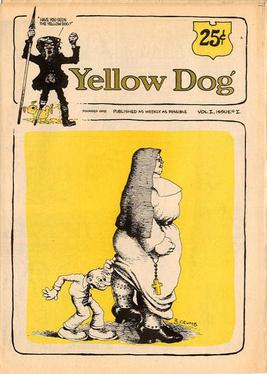
Yellow Dog was an underground comix newspaper and later comic book published by the Print Mint in Berkeley, California. It published 22 issues from 1968 to 1973, featuring many of the period's most notable underground cartoonists, including Robert Crumb, Joel Beck, Robert Williams, Rick Griffin, Greg Irons, and Trina Robbins. Other frequent contributors included Andy Martin, Franz Cilensek, John Thompson, Buckwheat Florida, Jr., Jim Osborne, Ronald Lipking, and Hak Vogrin. The founding editor was Print Mint co-publisher Don Schencker.

San Francisco Comic Book was an underground comix anthology published between 1970 and 1983. Conceived of and edited by Gary Arlington, the anthology highlighted the work of many of San Francisco's top underground talents, including Bill Griffith, Robert Crumb, Kim Deitch, Justin Green, Rory Hayes, Willy Murphy, Jim Osborne, Trina Robbins, and Spain Rodriguez.
Willy Murphy was an American underground cartoonist. Murphy's humor focused on hippies and the counterculture. His signature character was Arnold Peck the Human Wreck, "a mid-30s beanpole with wry observations about his own life and the community around him." Murphy's solo title was called Flamed-Out Funnies; in addition, he contributed to such seminal underground anthologies as Arcade, Bijou Funnies, and San Francisco Comic Book, as well as the National Lampoon.

Cartoonists Co-op Press was an underground comix publishing cooperative based in San Francisco that operated from 1973 to 1974. It was a self-publishing venture by cartoonists Kim Deitch, Bill Griffith, Jerry Lane, Jay Lynch, Willy Murphy, Diane Noomin, and Art Spiegelman. Cartoonist Justin Green's brother Keith acted as salesman/distributor, and the operation was run out of Griffith's apartment.
Barbara "Willy" Mendes is an American cartoonist, fine artist, and member of the underground comix movement. She is best known for her work alongside Trina Robbins on It Ain't Me Babe and All Girl Thrills. Although Mendes first created art under the name Willy, she later transitioned to the name Barbara.











